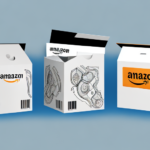Introduction to FBA and FBM
As an Amazon seller, one of the most crucial decisions you'll face is selecting the right order fulfillment method. Fulfillment by Amazon (FBA) and Fulfillment by Merchant (FBM) are the two primary options available, each offering distinct advantages and drawbacks. This guide provides an in-depth comparison to help you decide which fulfillment strategy aligns best with your business model.
Understanding Fulfillment by Amazon (FBA)
How FBA Works
FBA is Amazon’s comprehensive fulfillment service. Sellers store their inventory in Amazon’s fulfillment centers, and when a customer places an order, Amazon handles the picking, packing, shipping, customer service, and returns on behalf of the seller.
Advantages of FBA
- Prime Eligibility: Products fulfilled by Amazon are eligible for Amazon Prime, offering customers free two-day shipping, which can boost sales.
- Increased Visibility: FBA products often receive better placement in search results, enhancing visibility.
- Scalability: FBA allows sellers to scale their business without worrying about logistics.
- Amazon's Reputation: Leveraging Amazon's trusted reputation for reliable shipping and customer service can enhance your brand image.
Disadvantages of FBA
- Costs: FBA incurs fees for storage, fulfillment, and other services, which can impact profit margins.
- Limited Control: Sellers have less control over the fulfillment process, including packaging and shipping methods.
- Increased Competition: FBA’s popularity can lead to heightened competition, potentially driving down prices.
Understanding Fulfillment by Merchant (FBM)
How FBM Works
With FBM, sellers manage the entire fulfillment process themselves. This includes storing inventory, packing, shipping, and handling customer service and returns, either from their own facilities or through a third-party logistics provider.
Advantages of FBM
- Greater Control: Sellers maintain full control over the fulfillment process, allowing for customization and potentially better customer service.
- Cost Efficiency: FBM can be more cost-effective for sellers with established logistics systems or those selling low-margin products.
- Flexibility: Easier to manage unique packaging needs or handle fragile items requiring special handling.
Disadvantages of FBM
- Resource Intensive: Managing fulfillment requires significant time and resources, which can be challenging for small businesses.
- Scalability Issues: Scaling up operations can be difficult without investing in infrastructure or third-party services.
- Potential for Slower Shipping: Without Amazon’s logistics network, shipping times may be longer, which can affect customer satisfaction.
FBA vs FBM: Cost Comparison
When deciding between FBA and FBM, understanding the cost implications is vital. FBA fees encompass storage, fulfillment, and additional services, whereas FBM costs are mainly related to shipping, packaging, and handling. For detailed fee structures, refer to Amazon’s official FBA fee guide.
Generally, FBA is more expensive than FBM; however, the benefits such as Prime eligibility and Amazon’s logistics can justify the cost for many sellers. It's essential to perform a thorough cost analysis based on your product size, weight, and sales volume to determine the most profitable option.
Operational Considerations
Shipping Times
FBA offers fast shipping options, including two-day Prime shipping, which can enhance customer satisfaction and increase sales. On the other hand, FBM requires sellers to manage their shipping times, which can vary based on their logistics capabilities.
Customer Service and Returns
With FBA, Amazon handles customer service and returns, easing the seller's workload and ensuring professional handling. FBM sellers must manage these aspects themselves, which can be both time-consuming and require robust customer service systems.
Choosing the Right Fulfillment Method for Your Business
Factors to Consider
- Business Size: Larger businesses with higher sales volumes may benefit more from FBA, while smaller businesses might prefer the control of FBM.
- Product Type: Fragile or bulky items might be better suited for FBM to maintain control over packaging and handling.
- Profit Margins: Higher FBA fees can affect profitability; ensure margins can absorb these costs.
- Scalability Needs: Consider future growth and whether your fulfillment method can scale accordingly.
Common Mistakes to Avoid
- Ignoring All Associated Costs: Failing to account for all fees and expenses can lead to unexpected losses.
- Lack of Understanding Logistic Requirements: Not fully grasping the logistics involved can result in fulfillment delays and customer dissatisfaction.
- Short-Term Focus: Not considering the long-term impacts on your business growth when choosing a fulfillment method.
Case Studies and Real-world Examples
Numerous businesses leverage both FBA and FBM to optimize their operations. For instance, large brands like Procter & Gamble utilize FBA for its efficiency and extensive reach, ensuring products are readily available to a wide audience. Conversely, smaller enterprises such as handmade soap maker Bubble & Bee opt for FBM to maintain cost-efficiency and customize their fulfillment processes to align with their brand identity.
For more examples and detailed case studies, refer to articles from reputable industry sources such as Forbes or Shopify.
Future Trends in E-commerce Fulfillment
The e-commerce fulfillment landscape is evolving rapidly. Emerging trends include same-day and one-hour delivery services, the integration of drones and autonomous vehicles for faster and more efficient delivery, and the application of artificial intelligence and machine learning to streamline order processing and enhance customer service. Staying informed about these trends can help businesses adapt and stay competitive in the dynamic e-commerce environment.
Conclusion: Making the Decision Between FBA vs FBM
Choosing between FBA and FBM is a pivotal decision for Amazon sellers that hinges on individual business needs, resources, and growth aspirations. While FBA offers remarkable efficiency and access to Amazon’s vast logistics network, it comes with higher fees and reduced control over fulfillment processes. Conversely, FBM provides greater control and potential cost savings but demands more resources and robust logistics management. By thoroughly evaluating the costs, operational requirements, and long-term business goals, sellers can select the fulfillment method that best supports their e-commerce success.






















